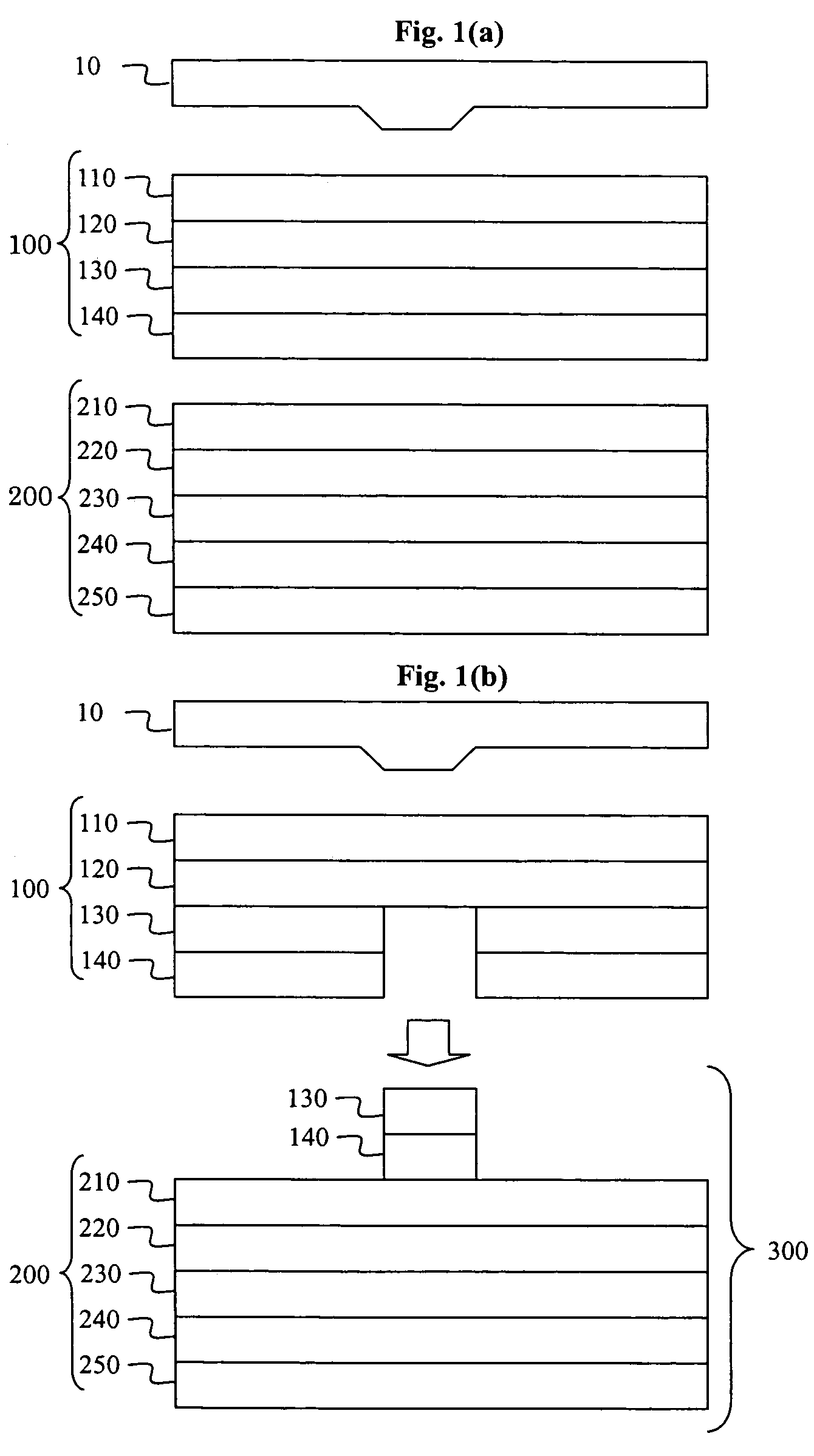Thermal transfer recording medium, method of recording same, recorded medium and recorded label
a technology of thermal transfer and recording medium, which is applied in the direction of thermography, identification means, instruments, etc., can solve the problems of insufficient solvent resistance of recorded images, and achieve the effect of improving chemical solvent resistan
- Summary
- Abstract
- Description
- Claims
- Application Information
AI Technical Summary
Benefits of technology
Problems solved by technology
Method used
Image
Examples
example 1
(1) Preparation of Thermal Transfer Recording Medium
[0408]A substrate was prepared of polyethylene terephthalate film of 4.5 μm thickness.
[0409]Then, silicone rubber (SD7226 manufactured by Dow Corning Toray Silicone Co. Ltd.) was applied to the opposite side at the side having the thermal transfer record layer.
[0410]The coating weight was 0.35 g / m2 after drying. The resulting substrate having heat resistance and lubricity was then dried.
[Formation of Separation Layer]
[0411]A mixture of the following components was dispersed in toluene, whereby a coating liquid for the formation of a separation layer was prepared.
[0412]
10% toluene dispersion of carnauba wax:90 parts10% toluene dispersion of ethylene-vinyl acetate copolymer:10 parts(Vinyl acetate contain: 28 wt % MFR: 15 dg / min)
[0413]The thus prepared coating liquid for the formation of a separation layer was coated on the substrate and dried, whereby a separation layer with a thickness of 1.0 μm was formed on the substrate.
[Formatio...
example 2
[0422]The procedure for preparation of thermal transfer recording medium of Example 1 was repeated except that the formulation of the ink layer was changed to be the following formulation.
[0423]A receiving medium was evaluated according to the procedure of Example 1.
[Formation of Ink Layer]
[0424]
Metallic salt of ethylene-methacrylic acid copolymer:62 parts(Chemipearl S-659: manufactured by Mitsui Chemicals, Inc.,Tensile strength: 280 kg / cm2, Percentage elongationat break: 450%, potassium salt) (Solid content: 25%)Aqueous dispersion of carbon black: (Solid content: 38%)22 partsWater:16 parts
example 3
[0425]The procedure for preparation of thermal transfer recording medium of Example 1 was repeated except that the formulation of the separation layer was changed to be the following formulation.
[0426]The thus formed receiving medium was evaluated in accordance with the procedure used in Example 1.
[Formation of separation Layer]
[0427]
toluene dispersion of polyethylene wax:90 parts(melting point: 126° C. DSC method)(Solid content: 10%)10% toluene dispersion of ethylene-vinyl10 partsacetate copolymer: (Vinyl acetate contain:28 wt %, MFR: 15 dg / min):
PUM
| Property | Measurement | Unit |
|---|---|---|
| elongation at break | aaaaa | aaaaa |
| melting point | aaaaa | aaaaa |
| particle diameter | aaaaa | aaaaa |
Abstract
Description
Claims
Application Information
 Login to View More
Login to View More - R&D
- Intellectual Property
- Life Sciences
- Materials
- Tech Scout
- Unparalleled Data Quality
- Higher Quality Content
- 60% Fewer Hallucinations
Browse by: Latest US Patents, China's latest patents, Technical Efficacy Thesaurus, Application Domain, Technology Topic, Popular Technical Reports.
© 2025 PatSnap. All rights reserved.Legal|Privacy policy|Modern Slavery Act Transparency Statement|Sitemap|About US| Contact US: help@patsnap.com


